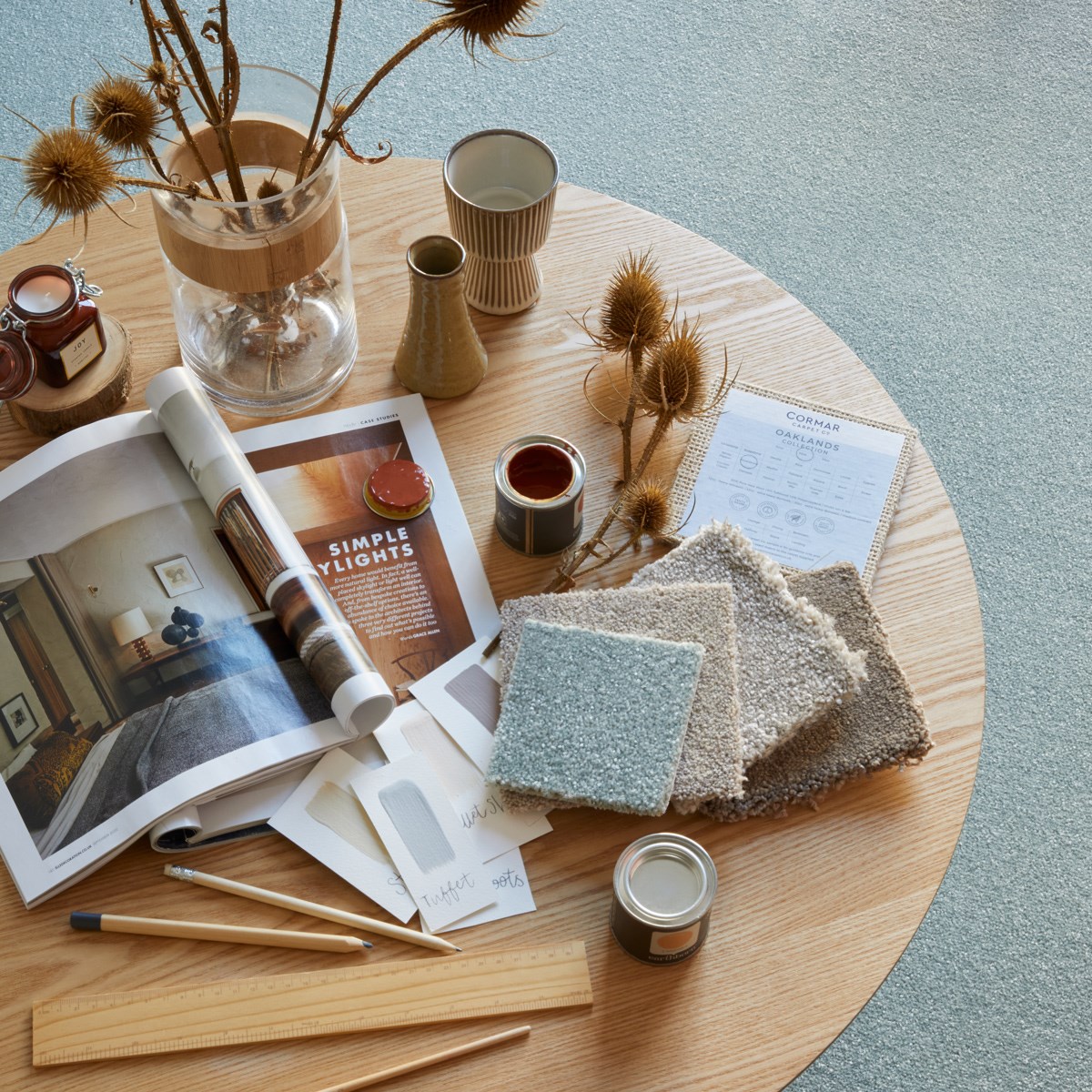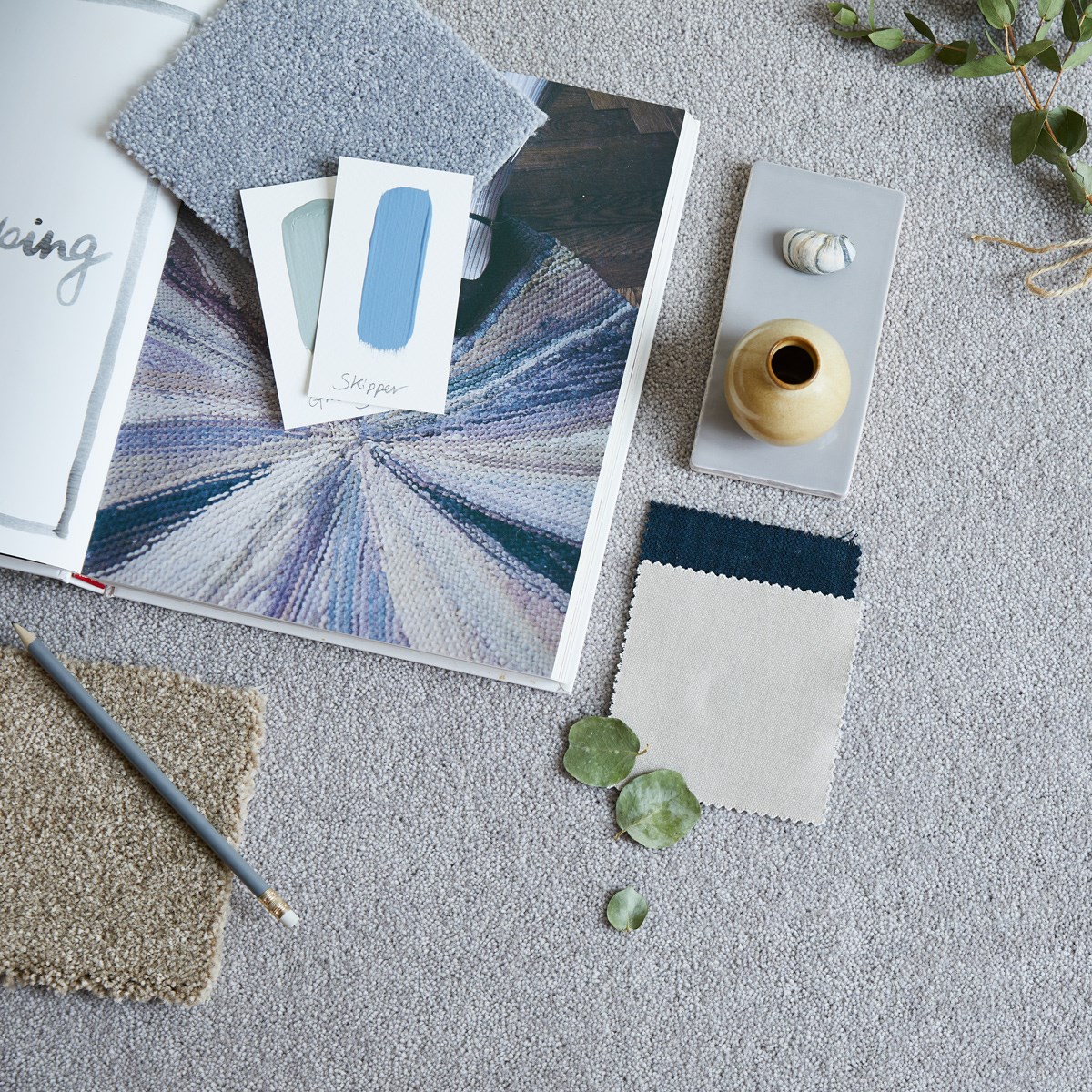As we continue to spend more and more time at home, some of us are using this time to undertake DIY improvements and makeovers. Our homes have become a real focus and it seems a good time to renovate, decorate and improve our living spaces.
If interior re-vamping and styling is high on your ‘to-do’ list but you’re not sure where to start, here’s some insider help from Cormar Carpets’ interior stylist, Jess Contomichalos. Her No. 1 tip is starting every project with a mood board.
Jess explains: ‘Whether I’m designing a room set for a photo shoot or a makeover at my home, the best way forward is to create a mood board. It will give you clarity and help ensure your colours, style and all major elements work together at a glance. It also allows you to show other people your ideas clearly and easily.”

3. Keep your mood board realistic to the space you want to design. Think about what will suit the room, can you adapt the style and will it work? Otherwise, you may have an interior space that looks like a stage set and will raise a few eyebrows… but not in the right way. Decide whether you’ll go for colour in your carpet or on the walls. If you have a small space to design – keep the carpets light or neutral (such as grey) and choose a mid-tone for the walls – unless you’re after drama… then you can probably go with a moodier wall colour.
4. If there isn’t a strong light source in the room (big windows or doors) then you may be better to stick to more neutral coloured furniture and add punchy coloured cushions, throws and artwork to add personality.
5. Don’t forget to embellish your board with images or samples that actually project the look you’re going for. So, for example, if you’re creating a seaside themed bathroom, add images of shells and other beach mementoes, it will really help you create the mood and set you in the right direction!
The vast majority of Cormar ranges have a neutral tone, making it exceptionally easy to pair our carpet samples with any colour mood board scheme!
